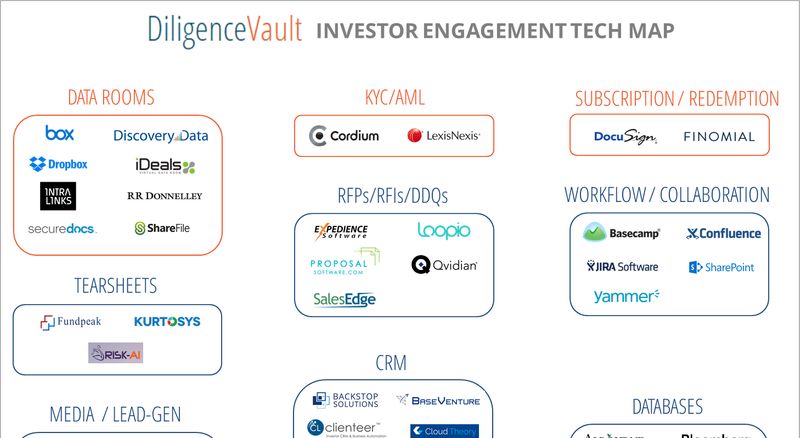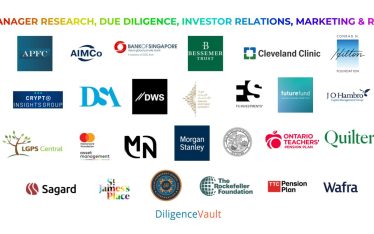Differentiation has become the touchstone of the future, and those funds that strategically embrace change in a way that responds to investor demands will be the ones that prosper going forward. – Paraphrasing E&Y (Global Hedge Fund & Investor Survey)
Creating differentiation in an increasingly competitive landscape not only requires innovation in investment product/strategy and best-in-class operations, but also a strategic focus on marketing, investor relations, and branding.
Taking the last point further, ever wonder what the universe looks like for the Investment Management and Private Equity and Venture Capital industries?
How to enable client strategy teams?
1) Delight investors with “right-sized” information at the right time
- Most investors complain about the lag in receiving the information from their managers. Do investors receive information in a timely and digestible manner? This often improves their perception of transparency and trust in a manager.
2) Continuously engage and communicate with investors, as they invest in lines and not dots
- How easy is it for investors to access the information? Do they have to dig through too many emails or download too many files?
- Is the investor engaged with the investment strategy? Are they aware of key success factors and risks in their portfolios, and how are these morphing?
3) Efficiently maintain firm’s fiduciary and compliance objectives
- Are all data points shared with the investor pre-approved? Internal approvals are often a bottleneck given the sensitivity of the information, selective investor rights, and time-limited resources. In addition, this is usually a manual and time-consuming process, for example while responding to a highly customized public plan RFP.
- Efficiently and accurately manage investor compliance, subscriptions and redemptions, capital calls and distribution notices. Are on-boarding and off-boarding procedures being dealt with effectively? Are the right AML/KYC checks being done at the time of investment, as well as periodically through the life of the relationship?
4) Effectively grow asset base, develop new products, and attain competitive intelligence
- How do you define the next set of products with the perfect product market fit?
- Are you effectively reaching new investors?
5) Organize and keep track of all manager and investor information
- With the sheer number of investor relationships and amount of information that needs to be shared, what technology can firms leverage to improve efficiency and collaboration? Team collaboration creates an adaptive coalition and minimizes duplicative efforts.
6) Always be in the know
- What are the strategies/investment vehicles in demand? What RFPs / RFIs are being issued? What personnel movements are occurring?
Scale smart: Operate as a team twice your size.
Firms have been using technology to support their efforts, ranging from lead generation, shared information storage, preparation, approvals, dissemination, and reporting to periodic surveys pushed out to investors. Often times, information duplicates across different systems.
We created a map of the tech and resources being leveraged by the industry:
Did we miss your name? Please email surya@diligencevault.com
What did we learn?
- The industry leverages general-purpose tech with a layer of customization to meet their needs.
- Kudos to JIRA, which originally was a bug-tracking tool for developers, and is now used to approve investor materials.
- Virtual data rooms (“VDRs”) dominate Private Equity / Real Estate landscape
- For generations, investment decisions have been driven by trust and relationships. The form of communication and tracking has resulted in email and CRM-integration tools to compete with VDRs in information dissemination.
In the recent past, several tech-enabled platforms have attracted investments or partnerships from industry innovators (Blackstone, BlackRock, Credit Suisse, and KKR to name a few). While a lot of these partnerships are centered around access and distribution, the internal functions still remain manually intensive and are a patchwork of different tech.
There remains a need for a vertically integrated tech that weaves all of these different functionalities together. In a relationship-heavy selling model, technology can be an unexpected foundation for innovation. It provides an avenue to empower investor-facing teams to understand problems and opportunities, and work as a team to nurture relationships as opposed to getting bogged down by manually intensive and repetitive tasks.
For an industry that thrives on a mentality of efficient capital allocation, these very firms would greatly boost their own metrics, balance sheets, and profitability by utilizing the next generation of technology!
Co-authored with Monel Amin



